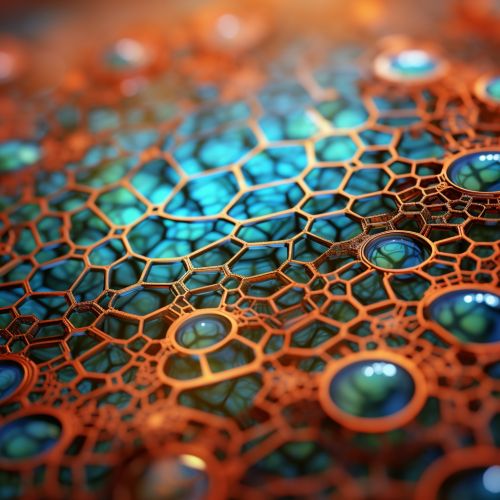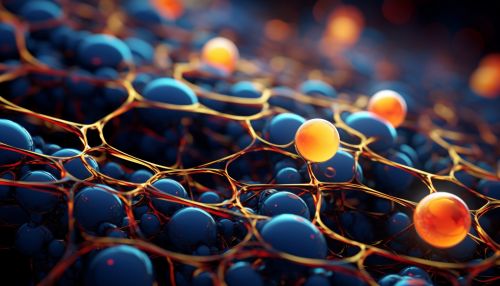Smectic phase
Introduction
The smectic phase is a type of liquid crystal phase that is characterized by layers of molecules with a high degree of orientational order. This phase is intermediate between the nematic and crystalline phases, exhibiting properties of both. The term "smectic" comes from the Greek word "smēktikos", meaning "cleansing" or "smoothing", due to the smooth texture of this phase under a microscope.


Classification
Smectic phases can be further classified into several subtypes, including Smectic A, Smectic B, Smectic C, and others, based on the specific arrangement and orientation of the molecules within the layers. The classification is primarily based on the degree of translational and rotational symmetry, the shape of the molecules, and the type of packing within the layers.
Smectic A
In the Smectic A phase, the long axes of the molecules are perpendicular to the plane of the layers. This results in a highly ordered structure with a high degree of orientational order. The molecules can rotate around their long axis, but they cannot move within the plane of the layer.
Smectic B
The Smectic B phase is similar to the Smectic A phase in that the molecules are arranged in layers. However, in the Smectic B phase, the molecules also exhibit positional order within the layers, meaning that they are arranged in a regular lattice. This results in a structure that is more ordered than the Smectic A phase.
Smectic C
In the Smectic C phase, the molecules are tilted with respect to the plane of the layer. This tilt can vary from 0 degrees (in which case the phase is identical to the Smectic A phase) to 90 degrees. The Smectic C phase is less ordered than the Smectic A and B phases, but more ordered than the nematic phase.
Properties
Smectic phases exhibit several unique properties due to their layered structure and high degree of order. These include anisotropic optical properties, unique rheological properties, and the ability to form textures under an electric field.
Optical Properties
Due to the orientational order of the molecules, smectic phases exhibit anisotropic optical properties. This means that the optical properties, such as refractive index and absorption, are different in different directions. This property is exploited in the design of liquid crystal displays (LCDs).
Rheological Properties
The layered structure of smectic phases gives rise to unique rheological properties. For example, they exhibit shear thinning behavior, meaning that their viscosity decreases under shear stress. This property is useful in applications such as lubricants and damping fluids.
Electric Field Response
Smectic phases can form textures under an electric field, a property known as electroclinic effect. This effect is used in the design of electro-optic devices, such as LCDs and optical switches.
Applications
Due to their unique properties, smectic phases find applications in a variety of areas. These include liquid crystal displays, optical switches, sensors, and lubricants.
Liquid Crystal Displays
Smectic phases, particularly the Smectic A and C phases, are widely used in the design of liquid crystal displays. The anisotropic optical properties of these phases allow for the manipulation of light, which is the basis for the operation of LCDs.
Optical Switches
The electroclinic effect exhibited by smectic phases is exploited in the design of optical switches. These devices use the change in orientation of the molecules under an electric field to switch light signals on and off.
Sensors
Smectic phases can also be used in the design of sensors. For example, the change in orientation of the molecules under an electric field can be used to detect changes in the environment, such as temperature or pressure changes.
Lubricants
The shear thinning behavior of smectic phases makes them useful as lubricants. They can provide low friction under high shear stress conditions, making them ideal for applications such as automotive lubricants and damping fluids.
